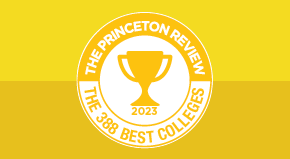The new 2019-2020 FAFSA is here! So, what does that mean for your early action applications? Submitting the FAFSA earlier means you’ll have more time to make an informed college choice.

1. You can submit the FAFSA asap
Beginning in 2017, the government now releases the FAFSA every year on October 1 st (versus January 1 st in previous years). This earlier release date means that you can also submit the FAFSA earlier, too! We recommend that you submit the FAFSA as soon as possible after October 1.
Read more about the 2017 FAFSA changes and deadlines .
2. Calculate out-of-pocket costs
The government uses the information on the FAFSA to determine your Estimated Family Contribution—or EFC. This dollar amount is an estimate of what you can afford to pay for college. Schools use the EFC to put together your financial aid packages. The bottom line is the sooner you submit your FAFSA, the sooner you can calculate your EFC.
3. Start weighing your financial aid options
While you won’t necessarily receive financial aid packages earlier from your early action schools, you WILL have a clearer picture of what your estimated costs might be before you commit. Compare your EFC with your dream school’s cost of attendance to determine how much financial aid you’ll need.
4. What happens next?
Visit fafsa.ed.gov to start filling out your FAFSA online. You’ll need your parents’ most recent federal income tax returns and W-2s, so let them know that you are starting the application. To prepare, you can also create an Federal Student Aid ID ( create an FSA ID here ), which you’ll use to sign your online application.
Learn more about paying for college and get our expert tips on how to finance your education.
Looking for strategic college advice?
Get one-on-one help from former Ivy League and top tier admission officers. Our College Admission Counselors will help you find, apply, and get accepted to your dream school.
Explore Colleges For You
Connect with our featured colleges to find schools that both match your interests and are looking for students like you.
Get Started on Athletic Scholarships & Recruiting!
Join athletes who were discovered, recruited & often received scholarships after connecting with NCSA's 42,000 strong network of coaches.
Best 388 Colleges
154,000 students rate everything from their professors to their campus social scene.



